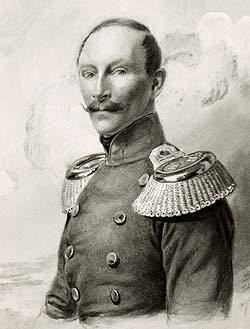Role 1809–1872 | Name Prince of | |
 | ||
Born 4 October 1809Konigsberg ( 1809-10-04 ) Issue Charlotte, Hereditary Princess of Saxe-MeiningenPrince AlbertPrincess ElizabethPrincess AlexandrineWilliam, Count of Hohenau (morganatic)Bernhard, Count of Hohenau (morganatic) Died October 14, 1872, Berlin, Germany Children Prince Albert of Prussia, Princess Charlotte Frederica of Prussia, Princess Alexandrine of Prussia Parents Frederick William III of Prussia, Louise of Mecklenburg-Strelitz Similar People Princess Marianne of the Net, Frederick William III of Prussia, Louise of Mecklenburg‑Strelitz, Princess Alexandrine of Prussia, Wilhelmine of Prussia - Queen of | ||
Prince Albert of Prussia (Frederick Henry Albert; German: Friedrich Heinrich Albrecht; 4 October 1809, in Königsberg – 14 October 1872, in Berlin) was a Prussian colonel general. Albert was the fifth son and youngest child of King Frederick William III of Prussia and Louise of Mecklenburg-Strelitz. His parents had fled to East Prussia after the occupation of Berlin by Napoleon. Two of Albert's elder brothers were Frederick William IV, King of Prussia from 1840 till 1861, and William I, King of Prussia from 1861 to 1888 and German Emperor from 1871 until 1888.
Contents
Career

In 1819 he joined the Prussian Army as a lieutenant and held the rank of a general of cavalry in 1852. He took part in the 1866 Austro-Prussian War as a cavalry corps commander at the battles of Gitschin and Königgrätz. In the Franco-Prussian War of 1870/71 he led a cavalry division at the battles of Wissembourg, Wörth and Sedan. He later joined the forces of his nephew Prince Frederick Charles of Prussia and Frederick Francis II, Grand Duke of Mecklenburg-Schwerin in the campaign against the Armée de la Loire.
After the war Albert was awarded the title of a Generaloberst. He is buried at the Charlottenburg Palace Park Mausoleum in Berlin.
He was the 74th Grand Cross of the Order of the Tower and Sword.
Family
In The Hague, on 14 September 1830 Albert married Princess Marianne, daughter of King William I of the Netherlands. The marriage was dissolved on 28 March 1849. They had five children:
In Berlin on 13 June 1853, Albert married secondly Rosalie Wilhelmine Johanna von Rauch, daughter of Gustav von Rauch, chief of the Prussian General Staff 1812-1813 and Prussian Minister of War 1837-1841. She was created Countess of Hohenau on 28 May 1853. They had two sons:
As this second union was considered a morganatic marriage, the couple temporarily had to avoid the Prussian court. Albert acquired a vineyard in Loschwitz near Dresden, Saxony, where he had a residence, Albrechtsberg Castle, erected in 1854.
Aftermath
In 1830 Albert had acquired a city palace in Berlin on Wilhelmstraße, then called Prinz-Albrecht-Palais. An adjacent street off Wilhelmstraße laid out in 1891 was named Prinz-Albrecht-Straße. After the Nazi Machtergreifung it became notorious as the seat of the Gestapo and the Reichsführer-SS. The Prinz-Albrecht-Palais itself from 1934 served as the headquarters of the SS Sicherheitsdienst under Reinhard Heydrich, from 1939 the Reichssicherheitshauptamt. In 1944 the building was heavily damaged by air raids and finally demolished in 1955. Since 1951 the street is named Niederkirchnerstraße, the area is now part of the Topography of Terror project.
